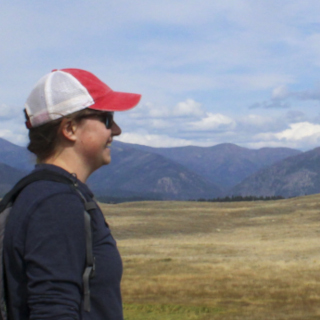Grasslands
Overview
Western Great Plains Steppe, Mixed Grass Prairie, and Great Plains Steppe were developed together and have many common features. The development was done with funding and expertise provided by the Ecosystem Research Management Institute (EMRI) of Seeley Lake, Montana. The initial use of the system in these geographic zones was to assist in developing a representation of historical conditions. Thus, an emphasis was placed on including the process of bison grazing. No treatment logic has been developed yet.
Discussion of System Knowledge
Ecological Stratification
The use of NRCS soil ecosystems as ecological stratification is common in all three geographic zones.
Vegetative Descriptions by Ecological Stratification
For non-forest communities, a sizeclass structure or density is not used. These two attributes are coded as “NA.” Thus, the pathway diagrams contain only one state. Upon editing the state, there are two new choices: Inclusion Rule and Species to Track. Both of these can be edited through the screens, not only changing the percents, but species can be added or deleted. The values in rate of change for species may be less than whole percents.
If the species value in the attributes file that came from the cover is greater than zero but there is no species change information for it within the pathway files, it will be brought in, but the species value will not change in simulations. In this case, the user can edit the pathway file, adding in change values for this new species.
These values can also be entered in by reading from an Excel spreadsheet in the Vegetative Pathways editor by selecting File > Import > Species Change.
Aquatic Unit Representation
Aquatic units were utilized to provide a water source for the bison grazing logic. The class uses the stream layer plus the polygons of water that are converted to a line to go with the streams. Each has to be identified as either perennial or intermittent. The logic for what is considered a water source in normal, dry, or wet time steps is not accessible for user change in this version.
There is no report that gives the total water source at any time step. But the existing vegetation unit history will show, for each vegetation unit, the distance to the nearest water source (distance used in bison grazing logic) and the aquatic unit that is the source and its status.
The intermittent aquatic units will only be considered a water source in wet time steps. In normal or dry time steps, they are not a water source. Future versions may have additional logic for changes in the size of water sources that are polygons.
Current logic for determining water source:
Time step with “normal succession” water sources are:
Water/water/1 polygons
Plant communities on clayey-overflow
Existing aquatic units that are “perennial”
Time step with “wet succession” water sources are:
Water/water/1 polygons
Plant communities on clayey-overflow
Existing aquatic units that are “perennial” or “intermittent”
Time step with “dry succession” water sources are:
Water/water/1 polygons
Existing aquatic units that are “perennial”
Time Steps
By default, these three zones use yearly time steps. Within the year, all four seasons are accounted for. This makes it possible for the grass communities to be more responsive to seasonal moisture changes. This makes a significant change in the display for EVU history.
It also has an impact on the reports. For processes we report all of them, so for a time step the sum of the acres of processes can be greater than the total landscape. For other attributes we take the only the last vegetation state at the end of the time step.
Processes
Bison Grazing
The Bison Grazing Logic screen makes the distinction between temporary and permanent water sources. The first step in editing bison grazing is to decide if the basic probability for all acres will be 100 percent or not. Specific exceptions can be listed. If you do not want any bison grazing you must change the default probability to zero. Changing the probabilities of the weights for each component, but still keeping the default with some value, is not the correct method. This will still result in Light Bison Grazing. The three components can have their weight spread in given distribution. One can even shift all the weight to one component. A cell cannot have less than the percent assigned as the weight.
Fire - Season of Fire
Although there is a screen for assigning the probability of the season that a fire may occur, in actuality fires are hardcoded in the fall for OpenSIMPPLLE v1.
Prairie Dog
This process must be locked in. There is no logic for predicting its occurrence.
Regeneration Logic
If there is any Species to Track Information available we will not call the Regeneration logic as a result of SRF.
For the case of Heavy-bison-grazing and Prairie-dog-active processes the “fire-event” logic is expanded so it is not just dependent on the probability of an event occurring. If the past time step process has been one of these processes, the plant community cannot get a fire event. In the long run we will have a screen to edit the logic that goes along with the fire-event.
The valid values are given for the three zones. All values are for non forested species. Future landscapes within theses geographic zones can include tree species. OpenSIMPPLLE v1.0 can represent landscapes with both forms of pathways. Non forest species with single states, not using size class and density, and forest species with multiple states using Sizeclass and density.
